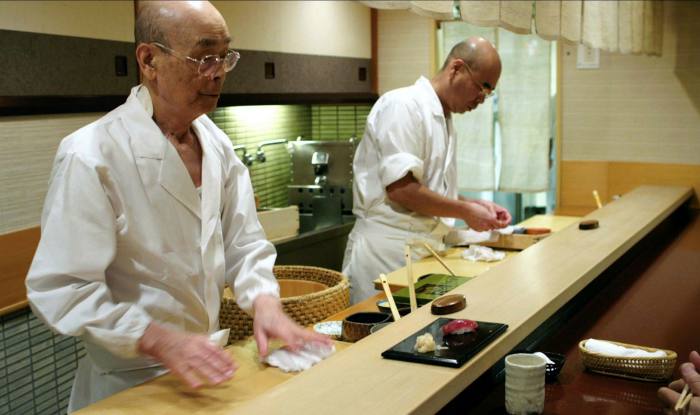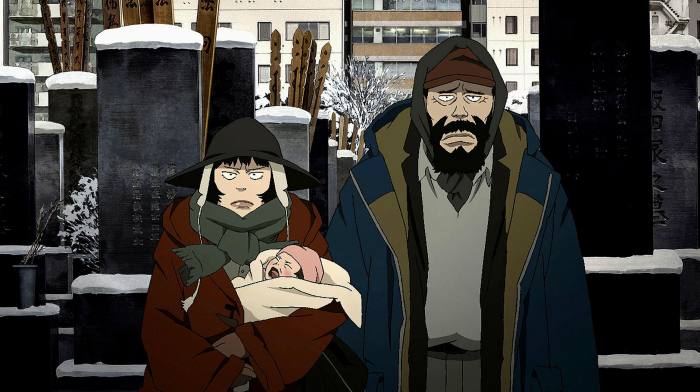
Stray Blade
Point Blank Games and 505 Games have released a new trailer for the action role-playing game Stray Blade, entirely dedicated to the combat system, which we at geekinco offer you exclusively on our pages.The video shows some gameplay sequences, naturally focused on combat, in which the basics of the same are explained, such as having to mix fast and powerful attacks to take down enemies, or the dodge system defined in eight dimensions, which guarantees an enormous fluidity to the clashes , while adding a strong tactical element.
The movie continues talking about the parade, with which to cancel the enemy attacks; of the arsenal available to the protagonist, including axes, broadswords, spears and so on; the ability to have two weapons ready at the same time, switching from one to the other in real time and the ability to suck the powers of some opponents, which however is not shown (probably will be the subject of another trailer).
Stray Blade is set in the ancient Acrea valley, of which the protagonist, together with his wolf friend, will have to discover the hidden secrets in order to restore lost peace. For more details, we recommend that you read our preview of Stray Blade.
Before leaving, we remind you that Stray Blade is scheduled for 2022 on PC, Xbox Series X | S and PS5, at a date yet to be determined . If you're interested, add it to your Steam Wishlist.
Have you noticed any errors?
Cities on screen: the best movies to spirit you away to Tokyo
Receive free Things to do in Tokyo updates
We’ll send you a myFT Daily Digest email rounding up the latest Things to do in Tokyo news every morning.
This article is part of a guide to Tokyo from FT Globetrotter
Has anywhere else made film lovers hold two thoughts in their head at once like Tokyo? One vision of the city became a Hollywood staple. It was created by a director born far from Japan — and was supposedly a different city entirely. But Ridley Scott’s Blade Runner — nominally set in LA — was an obvious riff on 1980s Tokyo, reborn as an omen of the urban future. It made that version of the city the go-to shorthand of sci-fi movies for years to come, giant techno advertising billboards looming down over a sprawl of neon alleyways.
And yet before and after Ridley Scott, there was another movie Tokyo too. In the films of great directors like Yasujiro Ozu and Akira Kurosawa, it was also the eye-level backdrop to deceptively simple, endlessly rich stories of work and family, crime and punishment. All human life in the here and now, in short, as well as replicants and the future.
Tokyo Story (1953)Where to watch: available to stream on Amazon Prime, iTunes and other platforms
 ‘A quiet magnum opus’: Yasujiro Ozu’s ‘Tokyo Story’ © Photo 12/Alamy
‘A quiet magnum opus’: Yasujiro Ozu’s ‘Tokyo Story’ © Photo 12/AlamyWhere else to begin? The quiet magnum opus by master director Yasujiro Ozu hinges on the visit to Tokyo by an elderly couple from provincial port town Onomichi, arriving to stay with their adult children. In the course of the trip, the family take a sightseeing bus, the tour guide pointing out the grand stillness of the Imperial Palace — such a contrast with “the bustle of Tokyo today”. But mostly city life ticks by mundanely, a world of modest offices and humdrum beauty salons. The details Ozu uses can be particular — the Atami hot springs outside the city play a key role. But the Tokyo of Tokyo Story is as much a symbol as a location — a place where people leave behind their pasts, and with them their families too.
Akira (1988)Where to watch: Amazon Prime, iTunes and other platforms
 Made back in the 1980s, ‘Akira’ uncannily imagined a future Tokyo where the 2020 Olympics would be staged © Capital Pictures
Made back in the 1980s, ‘Akira’ uncannily imagined a future Tokyo where the 2020 Olympics would be staged © Capital PicturesThe film that more than any other kindled western interest in manga and anime was actually set in the “Neo-Tokyo” of 2019 — three decades after the fictional destruction of the original city. Still, the place was a dead ringer for much of real-life 1980s Tokyo, albeit with the bulk of Tokyo Bay reclaimed for land and the night skyline cranked into a wall of glinting skyscrapers. The influence of Blade Runner had been reflected back through Japanese culture via the imagination of director Katsuhiro Otomo. An unexpected postscript saw life and art blur further — the plot involving the staging of the 2020 Olympics, as duly won by the actual Tokyo. (A stranger omen still, it turned out, was the splash of graffiti that read: “Just cancel it!”)
Jiro Dreams of Sushi (2011)Where to watch: Amazon Prime, iTunes and other platforms
 Sushi chef Jiro Ono — seen here at work with his son Yoshikazu — and his famed Tokyo restaurant are the subject of a 2011 documentary © AF archive/Alamy
Sushi chef Jiro Ono — seen here at work with his son Yoshikazu — and his famed Tokyo restaurant are the subject of a 2011 documentary © AF archive/AlamyA documentary almost as precise as the Tokyo landmark it celebrates, Jiro Dreams of Sushi mostly takes place on site at Sukiyabashi Jiro, the famously tiny restaurant run by sushi master Jiro Ono in an unremarkable Ginza basement. Here, as gastronomes will know, food awarded three Michelin stars (until a 2019 parting of the ways over the reservations process) is served to just 10 customers at a time, arranged on stools at a single wooden counter. Perfectionism is a given. Days off are only taken for funerals; the Tsukiji fish market is hawkishly scoured. And then there is the pure food porn of it all. Years before Instagram, every single piece of nigiri is shot so beautifully that sushi lovers may go weak just looking at the screen.
Stray Dog (1949)Where to watch: Amazon Prime and other platforms
 Kurosawa’s crime drama ‘Stray Dog’ unfurls among the rubble of postwar Tokyo during the long hot summer of 1949 © Shintoho/Kobal/Shutterstock
Kurosawa’s crime drama ‘Stray Dog’ unfurls among the rubble of postwar Tokyo during the long hot summer of 1949 © Shintoho/Kobal/ShutterstockFew cities are at their best in a heatwave, but the Tokyo of Stray Dog makes the viewer sweat from the start. Witness the scene of bus passengers struggling for air early in the great Akira Kurosawa’s knuckle-hard crime drama. The setting is a battered postwar Tokyo, rubble still strewn about a city filled with pickpockets and war veterans mixed up with the underworld. (Locations included the now-demolished Korakuen baseball stadium and Ameya Yokocho, then a hub of the black market.) Kurosawa filmed with verité grit over the real torrid summer of 1949, every frame crowded with bodies. The movie revolutionised the crime drama; Kurosawa’s assistant director Ishiro Honda would shortly direct his own Tokyo movie, Godzilla.
Tokyo Sonata (2008)Where to watch: available on BluRay and DVD
 Teruyuki Kagawa as an unemployed salaryman in ‘Tokyo Sonata’ © Alamy
Teruyuki Kagawa as an unemployed salaryman in ‘Tokyo Sonata’ © AlamyNo relation to the director of Stray Dog, with Tokyo Sonata Kiyoshi Kurosawa made a film closer in spirit to Ozu. Another tale of a family coming undone in a middle-class Tokyo, the story begins with the stern patriarch losing his job to outsourcing. As a salaryman without a salary, the horror of his fate in a city of business is clear. But as the plot expands, more and more about the family’s existence seems to be a façade, in a movie rooted in the routine stuff of Tokyo life — malls, subway stations, construction sites.
Lost in Translation (2003)Where to watch: Amazon Prime, iTunes, YouTube and other platforms
 Bill Murray and Scarlett Johansson hit the karaoke in ‘Lost in Translation’ © Elemental Films/TCD/Prod.DB/Alamy
Bill Murray and Scarlett Johansson hit the karaoke in ‘Lost in Translation’ © Elemental Films/TCD/Prod.DB/AlamyLike a knowing update on the sightseeing scene of Tokyo Story, Sofia Coppola’s Lost in Translation captured Tokyo through the eyes of two American visitors. One was a movie star, the other the wife of a famed photographer, each brought together in mutual disorientation. (They were played, of course, by Bill Murray and Scarlett Johansson.) Their encounter began in the Park Hyatt hotel, but the escape the pair made into Shinjuku and Shibuya — with Coppola shooting guerrilla-style — clinched the deal for lovestruck audiences. Fans of the wistful not-quite-romance that followed can retrace their journey from the New York Bar to the Shibuya scramble crossing, and even the Udagawacho branch of the Karaoke Kan chain where Johansson sang a husky, uncertain “Brass in Pocket”.
Tokyo Godfathers (2003)Where to watch: Amazon Prime, iTunes and other platforms
 An anime take on the Nativity by the late Satoshi Kon, ‘Tokyo Godfathers’ is a ‘wild-card festive treat’ © Allstar Picture Library/Alamy
An anime take on the Nativity by the late Satoshi Kon, ‘Tokyo Godfathers’ is a ‘wild-card festive treat’ © Allstar Picture Library/AlamyThe same year that Sofia Coppola was making hay with tourist hotspots, director Satoshi Kon told a tale of contemporary Tokyo to very different effect. Tokyo Godfathers is a madcap anime spin on the Nativity, set on Christmas Eve with an abandoned newborn discovered by a recast three wise men from the margins of the city: a teenage runaway, a homeless trans woman and a middle-aged street drinker. The frantic plot involves a yakuza assassin — shades of Stray Dog — and the result is not just a singular kind of Tokyo story but a wild-card festive treat as well.
Solaris (1972)Where to watch: Amazon Prime, iTunes and other platforms
 Tarkovsky’s outer-space epic ‘Solaris’ includes a key scene set on Earth filmed on Tokyo’s Shuto Expressway © Moviestore Collection/Alamy
Tarkovsky’s outer-space epic ‘Solaris’ includes a key scene set on Earth filmed on Tokyo’s Shuto Expressway © Moviestore Collection/AlamyBlade Runner and Lost in Translation will always be the most famous outsiders’ views of Tokyo — but another director from beyond Japan captured the city every bit as indelibly. Solaris, the science-fiction masterwork of Russian visionary Andrei Tarkovsky, took place mostly in a space research station, but before that came a brief visit to what the story portrayed as a city of the future. The result was a five-minute sequence that simply followed a car journey along the elevated overpasses and brightly lit tunnels of the Shuto Expressway into Akasaka. The legend was that it was Tarkovsky’s way of weeding out audiences with no attention span. True or not, it became one of the most purely hypnotic sequences in cinema — one forever bound up with the everyday head-spin of modern Tokyo.
Which Tokyo films would you recommend? Tell us in the comments
Cities with the FT
FT Globetrotter, our insider guides to some of the world’s greatest cities, offers expert advice on eating and drinking, exercise, art and culture — and much more
Find us in Tokyo, New York, London, Paris, Rome, Frankfurt, Singapore, Hong Kong and Miami